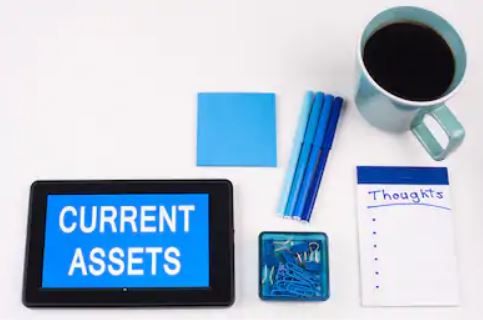The current assets are also considered as the current account. This is either cash or even a resource, which are expected to be the converted into cash within one year. The resources are referred to as the liquid assets because these are simply converted to the cash in a short span of period. You can take the inventory as the example.
Inventory can easily be sold for the cash in the next 12 months. You can actually contrast that along with a single piece of equipment, which is extremely difficult to sell. Besides that, the inventory is also expected to be sold in a normal course of the trade for the retailers.

This concept is very vital to organization in the daily operations of a business. As all the loans, monthly bills turn out to be due; the management needs to convert enough current resources into cash for pay the debt. However, the management is not just the one important thing in this specific category of assets.
In recent times, a lot of investors and a lot of creditors out there utilize numerous liquidity ratios so that they can analyze the entire liquidity of the company right before they lend or invest to it. Each and every investor out there want to know that their invest will continue to grow and the company will be able to pay some returns in the future.
Check:
- Income Statement Formula, Examples, Types, Formats and More
- Profit Margin Definition, Formula and How to Calculate It?
How to Find Current Assets?
The absolutely current assets are separated clearly along with the order of liquidity. As people know that the cash is the most obvious liquid asset and along with that the receivables represent cash, which the company already has earned but has not yet received. Inventory is a little less liquid so this represents some goods that might sell in a speedy manner or might take some time to convert to cash. There are three beneficial ratios that you will be able to calculate with current assets. Finally, there are several ratios people can calculate using the current assets, which will be able to assist people to get the picture of a company’s ability to meet its short-term obligations.
- The very first thing is that, the cash ratio is the most conservative, as this only takes the company’s cash and equivalents into account, dividing those numbers by the current liabilities. It shows how a company can immediately cover the short-term debts readily.
- Secondly, the quick ratio contains the marketable safeties as well as accounts receivable, but ignores inventory. It also tells people about the liquidity assets about the company in relation to its short-term liabilities, and is also known as the “acid-test ratio.”
To sum this up, the current assets are beneficial while trying to decide the ability of a company to meet its debt over next year or so.
Check:
- Newton-Raphson Method Formula and Explanation Guide
- Current Liabilities Definition, Objectives, and Importance
List of Current Assets with Top Examples:
There are numerous assets, which can be included in the category but this will discuss the most common ones.

- Cash – Cash is all coin as well as currency the company owns. It contains all of the money in a company’s bank account, petty cash drawer, cash registers, and any other depository. It also can contain domestic or foreign currencies, but the investments are not included.
- Cash Equivalents – The cash equivalents are the simple investments, which are so closely related to the cash and easily converted into the cash; they might as well be currency. A proper example of the equivalent is a US Treasury Bill. T-bills can be exchanged for the cash at any point with no risk of losing their value.
- Accounts Receivable – Accounts receivable is basically the short term loan to each and every customer and the vendors who buy the goods on account. Typically, customers can buy goods and pay for them in 30 to 90 days. Accounts receivable keeps track of these loans.
- Inventory – Inventory is the merchandise that the company buys or makes to sell to customers for a profit. It could be anything from the pencils to houses to cars. This depends on a business. For instance, the car dealership is in the business of reselling cars. Therefore, their cars are simply considered inventory, even though they have ample amount of pencils in their offices.
- Prepaid Expenses – Prepaid expenses are precisely what they sound such as expenses, which have been paid before they were consumed. Insurance is a good example. The six-month insurance policy is typically paid for up front even though the insurance is not utilized for another six months. Even though all these assets will not be converted into the cash, they will be consumed in a current period.
- Investments – Investments, which are short-term in nature and expected to be sold in the current period, are also included in this category. These typically contain investments in stock called available for sale securities.
How Are Current Assets Reported on Financial Statements?
The balance sheet is the proper financial statement, which reports the main chart of the accounts in order of accounting equation: assets, liabilities, and equity. Current assets are basically considered as the first items in assets section.
They are also presented for liquidity starting with cash. Going back to the proper list of current assets, they would report them in this order: accounts receivable, cash, inventory, prepaid expenses, short-term investments, and due from affiliates.


